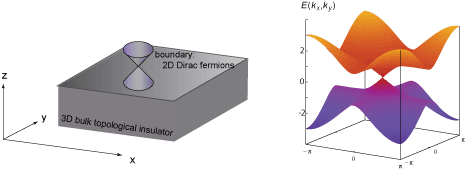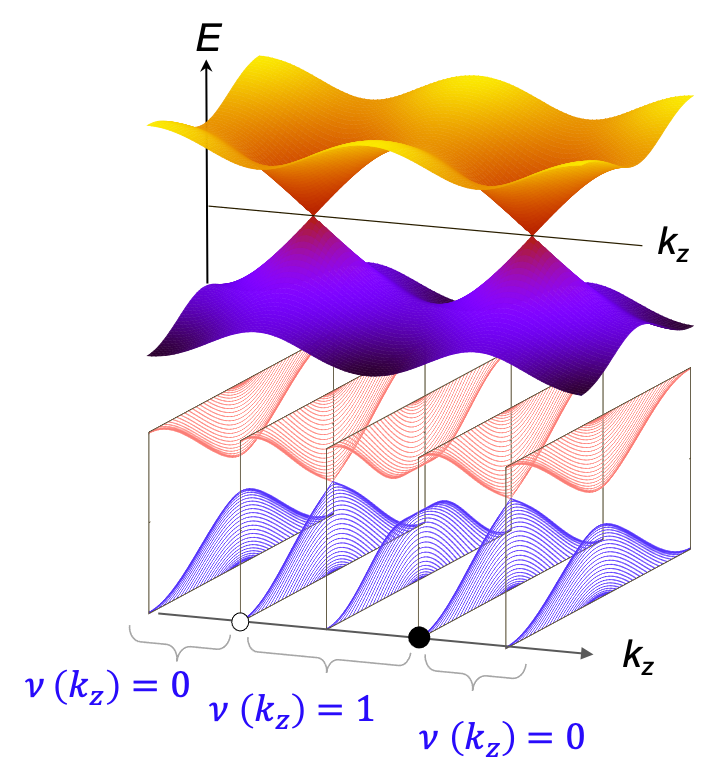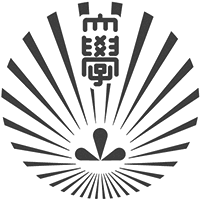Topological insulator

In 2005, the "topological insulator" was theoretically proposed as a completely new state of matter, and in 2007, its existence was experimentally clarified. This attracted a great deal of attention in condensed matter physics and led to the establishment of a new field.
The topological insulator is the phase of matter characterized by beautiful mathematics (topology), having a gap in the bulk and gapless excitation modes on the surface and interface. The surface state of a three-dimensional topological insulator is described by a two-dimensional relativistic wave equation (Dirac equation), it exhibits special properties different from ordinary metals. Our group theoretically study on electrical conduction on the surface of topological materials, especially the effects of disorders and interactions, the electromagnetic response caused by the surface states, and their application to spintronics.
Topological superconductor
The concept of topological matter is not limited to insulators, but the topological superconductors, which are characterized by topology, have also been proposed. The surface state of a three-dimensional topological superconductor is described as a Majorana quasiparticle. Majorana particles are particles that are antiparticles themselves and exhibit strange properties such as non-commutative statistics. Recently, it was proposed that its properties can be applied to quantum computing, and is expected as a key to the realization of quantum computers. Our group theoretically study on the fundamental properties of topological superconductors.
Topological semimetal

Topological semimetals are materials that have a three-dimensional linear dispersion in bulk. The topological semimetals is a kind of topological material, because it can be understood as a layered system of topological insulators and trivial insulators in momentum space. Those with quadruplly degenerate bulk gapless points are called the Dirac semimetal, and those with doubly degenerate bulk gapless points are called the Weyl semimetal. For a thin film, the surface/interface features become dominant as in the case of topological insulators, while for a thick film, charcteristic properties due to the bulk linear dispersion appear. Therefore the topological semimetals are more promising for various device applications. Our group theoretically study on the universal features of topological semimetals, material specific peroperties (such as Co3Sn2S2), and their application to spintronics devices.
